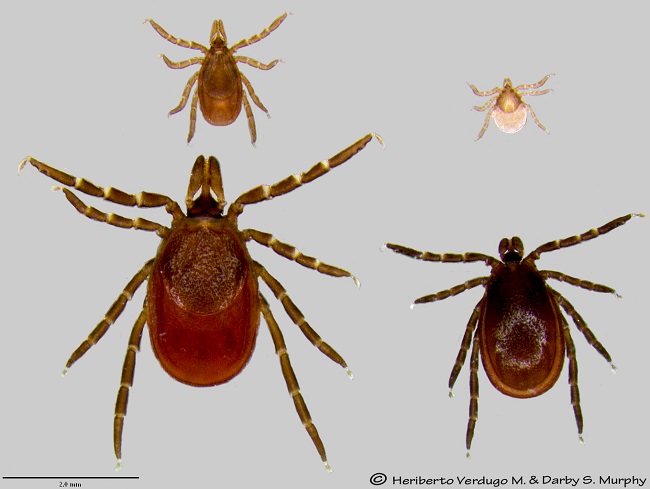How to Prevent Tick Bites This Fall

With the cooler weather, fall is a great time to get outdoors. Maybe you’re thinking of conducting your science or P.E. classes outside. Schoolgrounds might have forests nearby with walking trails. Many students are looking forward to fall field trips. Unfortunately, some tick species also become more active during the fall—in fact, ticks can be active any time of year (CVMA, n.d.).
Vector-borne diseases are becoming more common as the ranges of ticks expand (CDC, 2024). Lyme disease is the most common tick-borne disease in the United States (Struckhoff, 2024). Blacklegged ticks, also known as deer ticks, can spread bacteria that cause Lyme and other diseases. These ticks look for hosts in the fall when conditions are ideal for them (CVMA, n.d., URI, n.d.). According to the University of Rhode Island’s TickEncounter Resource Center, around half of the population of this species of tick in New England, the mid-Atlantic, and Upper Midwest carry the Lyme disease bacteria. The most effective way to protect yourself and others from getting sick is to prevent tick bites.
If you are spending time outdoors where ticks are active, stay on trails and wear long pants, sleeves and socks. Walking through brushy or grassy areas increases the risk of being bitten. Tucking your shirt into your pants and your pants into your socks can provide extra protection. Closed-toed shoes and hats are also recommended.
You can apply an EPA-approved repellent to clothing. Look for an EPA registration number on the label to be verify the product’s safety and effectiveness.
After outdoor activities, do a thorough tick check. Ticks prefer covered areas like the scalp, under the arms, around the waistband and between the legs (Struckhoff, 2024).
If you are bitten by a tick, remove with tweezers as close to the skin as possible, pulling straight upward. Prompt removal can reduce the risk of Lyme disease (CDC, 2021). Dispose of the tick in the toilet and clean the bite area and your hands with soap and water.
Enjoy the fall weather safely!
Canadian Veterinary Medical Association (CVMA). (n.d.). Seasonality of Ticks. Tick Talk. https://ticktalkcanada.com/seasonality-of-ticks/
CDC. (2021, November 3). Tick Bite: What to Do. https://www.cdc.gov/ticks/pdfs/FS_TickBite-508.pdf
CDC. (2024, May 10). Fight the Bite. CDC Vector-Borne Diseases. https://www.cdc.gov/vector-borne-diseases/fight-the-bite/index.html
Struckhoff, E. (2024, January 19). Preventing Tick Bites in the Fall. PennState Extension. https://extension.psu.edu/preventing-tick-bites-in-the-fall
University of Rhode Island (URI). (n.d.). Fall Tick Alert – This time of year they’re pretty much ALL deer ticks. TickEncounter. https://web.uri.edu/tickencounter/tick-notes/fall-tick-alert/